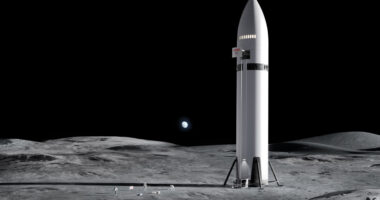Satellites will soon share power and momentum through laser beams, enabling spacecraft to move without onboard fuel and transforming satellite constellations from independent units into dynamic, interconnected systems capable of redistributing resources across thousands of spacecraft.
The project, called Orbital Architectures for Cooperative Laser Energetics (ORACLE), aims to harness existing laser interlinks between satellites to transfer power, momentum, and data. Sharing momentum with laser light could enable satellites to move without the burden and limitations of onboard fuel, whilst sharing energy can be used to enhance the efficiency of existing propulsion systems.
“With the explosive growth of satellite constellations, we are now at a moment where expanding cooperation between satellites via laser links can create capabilities we’ve never seen before,” said Christopher Limbach, U-M assistant professor of aerospace engineering, who leads the project. “By integrating data, power and momentum sharing into a single laser-based framework, ORACLE could transform constellations from collections of independent satellites into dynamic, interconnected systems.”
Information at incredible speeds
Large-scale satellite constellations, such as Starlink and Kuiper, exchange information at incredible speed through laser-interlink technologies, but each satellite remains isolated in terms of power and propulsion. Each carries its own fuel and propulsion system to maintain its correct position, in the right orbit, and facing the right direction.
The new capabilities will enhance the sustainability and longevity of space missions, making them more resilient to disruptions such as space weather. They will also make satellite constellations easier to reconfigure and facilitate the repositioning or removal of space debris.
The team is attacking the problem on 4 fronts: next-generation materials that allow satellites to efficiently convert laser beams into usable power whilst also serving as communication channels or solar power converters, led by Seth Hubbard at Rochester Institute of Technology; techniques that enable multiple laser beam bounces between satellites to amplify thrust for propellant-free manoeuvring, led by Limbach; advanced control and stabilisation algorithms to maintain precise laser links despite unpredictable space environments, led by Dennis Bernstein at U-M; and constellation-level decision frameworks that allow thousands of satellites to cooperate and redistribute resources, led by Giusy Falcone at U-M.
The three-year effort led by the University of Michigan is funded with $2 million from the Air Force Office of Scientific Research. In the final year of the project, team members will integrate their technologies to create the first demonstration of a laser terminal capable of transferring data, power, and momentum.
Satellite constellations have transformed global communication while also advancing navigation and Earth observation, which are essential for applications such as weather forecasting, wildfire tracking, and disaster recovery.










